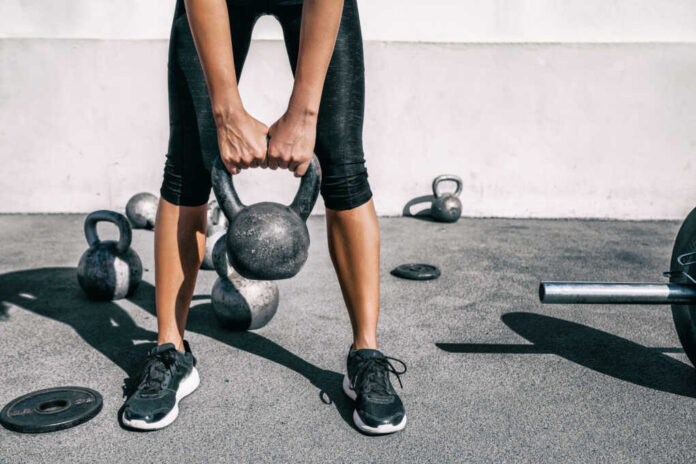
A strategic lower body workout can revitalize your metabolism and significantly enhance muscle strength, even if you’ve been inactive for years or are looking to take your fitness to the next level.
At a Glance
- Strength training can boost metabolism by building muscle mass, which burns more calories even at rest than fat tissue does
- Lower body workouts that incorporate compound movements like squats and lunges target multiple muscle groups simultaneously for maximum metabolic impact
- Combining high-intensity interval training (HIIT) with strength exercises creates an “afterburn effect” that continues to burn calories hours after your workout ends
- Experts recommend strength training major muscle groups at least twice weekly for optimal metabolic and strength benefits
The Metabolism-Muscle Connection
Understanding the relationship between metabolism and muscle is essential for creating an effective workout routine. Metabolism refers to the process by which your body converts food into energy, with your metabolic rate indicating how many calories you burn during basic functions. While factors like genetics, age, and hormonal conditions affect metabolism, muscle mass is one variable you can control through exercise. Since muscle tissue requires more energy to maintain than fat, building muscle through strength training effectively raises your resting metabolic rate.
According to research, each pound of muscle burns approximately 6 calories per day at rest, compared to only 2 calories burned by a pound of fat. This means that even small increases in muscle mass can lead to significant changes in your body’s calorie-burning capabilities over time. For adults over 40, this becomes increasingly important as natural age-related muscle loss (sarcopenia) begins to accelerate, potentially slowing metabolism and contributing to weight gain if not addressed through proper exercise.
— Saemin Ahn – seldom malice, full commit – Max.ΔV (@Saemin4655) October 8, 2024
Compound Movements for Maximum Impact
When designing a lower body workout to boost metabolism, compound exercises should form the foundation of your routine. Unlike isolation exercises that target single muscle groups, compound movements engage multiple muscle groups simultaneously, requiring more energy and resulting in greater calorie burn. Squats, deadlifts, and lunges are particularly effective as they recruit the largest muscles in your body—the quadriceps, hamstrings, and glutes—all at once.
To structure an effective lower body workout, include 3-4 compound movements as your primary exercises, followed by 1-2 isolation exercises if desired. For example, start with squats, deadlifts, and walking lunges, then finish with calf raises or hamstring curls. This approach ensures you’re maximizing metabolic impact while also addressing any specific areas that might need additional attention. For beginners, bodyweight versions of these exercises provide an excellent starting point, while more advanced individuals can add resistance through dumbbells, barbells, or resistance bands.
The HIIT Advantage
High-intensity interval training (HIIT) offers a powerful way to enhance the metabolic benefits of your lower body workout. By alternating between intense exercise bursts and short recovery periods, HIIT creates an “afterburn effect” known as excess post-exercise oxygen consumption (EPOC). This physiological response causes your body to continue burning calories at an elevated rate for hours after your workout has ended, making it particularly effective for metabolism boosting.
A sample HIIT-style lower body workout might involve performing squats for 40 seconds followed by 20 seconds of rest, then lunges for 40 seconds followed by 20 seconds of rest, continuing through 4-6 exercises with minimal breaks between. This approach not only maximizes calorie burn during the workout but also stimulates muscle growth and strengthening. For those new to HIIT or returning to exercise after a break, start with shorter work intervals (20-30 seconds) and longer rest periods (30-40 seconds), gradually adjusting the ratio as fitness improves.
— Brady Holmer (@B_Holmer) April 15, 2024
Consistency and Progression
For optimal results in boosting metabolism and building lower body strength, consistency and progressive overload are key principles to follow. Begin with 1-2 lower body workouts per week if you’re new to strength training, and consider increasing frequency to 2-3 sessions weekly as your fitness improves. Each workout should challenge you appropriately—if you can easily complete all sets and repetitions, it’s time to increase weight, repetitions, or decrease rest periods.
Remember that proper warm-up and cool-down routines are essential components of any effective workout program. Before beginning your lower body exercises, spend 5-10 minutes on dynamic movements like leg swings, bodyweight squats, and walking lunges to prepare your muscles. Following your workout, dedicate time to stretching to maintain flexibility and support recovery. By approaching your lower body workouts systematically and progressively, you’ll maximize metabolic benefits while building lasting strength that supports overall health and functional fitness well into your later years.


















